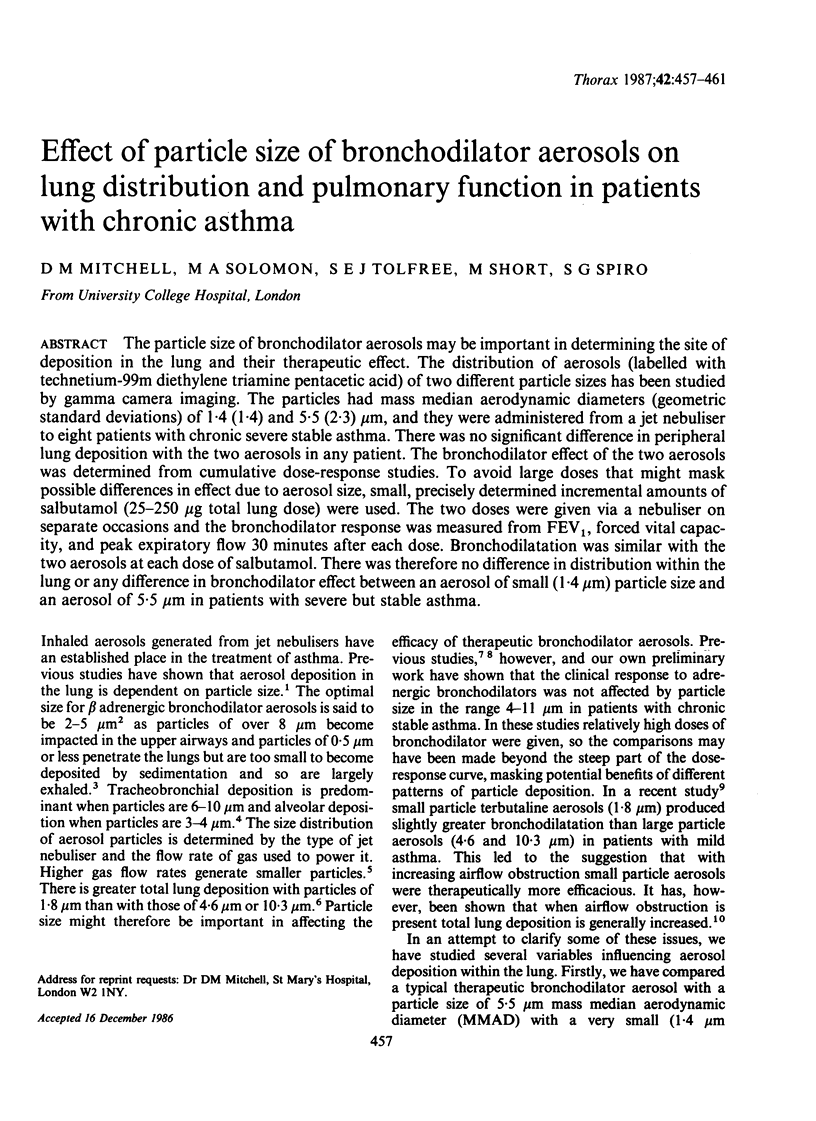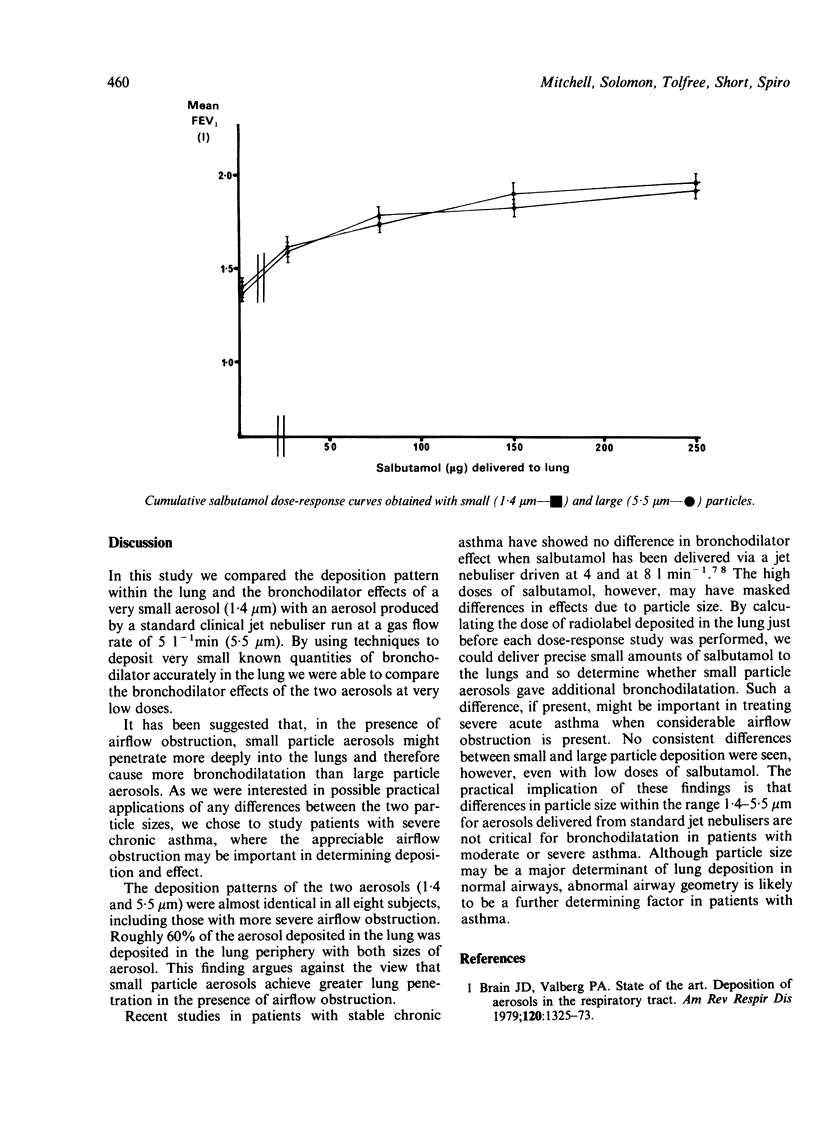Abstract
The particle size of bronchodilator aerosols may be important in determining the site of deposition in the lung and their therapeutic effect. The distribution of aerosols (labelled with technetium-99m diethylene triamine pentacetic acid) of two different particle sizes has been studied by gamma camera imaging. The particles had mass median aerodynamic diameters (geometric standard deviations) of 1.4 (1.4) and 5.5 (2.3) micron, and they were administered from a jet nebuliser to eight patients with chronic severe stable asthma. There was no significant difference in peripheral lung deposition with the two aerosols in any patient. The bronchodilator effect of the two aerosols was determined from cumulative dose-response studies. To avoid large doses that might mask possible differences in effect due to aerosol size, small, precisely determined incremental amounts of salbutamol (25-250 micrograms total lung dose) were used. The two doses were given via a nebuliser on separate occasions and the bronchodilator response was measured from FEV1, forced vital capacity, and peak expiratory flow 30 minutes after each dose. Bronchodilatation was similar with the two aerosols at each dose of salbutamol. There was therefore no difference in distribution within the lung or any difference in bronchodilator effect between an aerosol of small (1.4 micron) particle size and an aerosol of 5.5 microns in patients with severe but stable asthma.
Full text
PDF




Selected References
These references are in PubMed. This may not be the complete list of references from this article.
- Brain J. D., Valberg P. A. Deposition of aerosol in the respiratory tract. Am Rev Respir Dis. 1979 Dec;120(6):1325–1373. doi: 10.1164/arrd.1979.120.6.1325. [DOI] [PubMed] [Google Scholar]
- Chan T. L., Lippmann M. Experimental measurements and empirical modelling of the regional deposition of inhaled particles in humans. Am Ind Hyg Assoc J. 1980 Jun;41(6):399–409. doi: 10.1080/15298668091424942. [DOI] [PubMed] [Google Scholar]
- Clay M. M., Pavia D., Clarke S. W. Effect of aerosol particle size on bronchodilatation with nebulised terbutaline in asthmatic subjects. Thorax. 1986 May;41(5):364–368. doi: 10.1136/thx.41.5.364. [DOI] [PMC free article] [PubMed] [Google Scholar]
- Clay M. M., Pavia D., Newman S. P., Clarke S. W. Factors influencing the size distribution of aerosols from jet nebulisers. Thorax. 1983 Oct;38(10):755–759. doi: 10.1136/thx.38.10.755. [DOI] [PMC free article] [PubMed] [Google Scholar]
- Douglas J. G., Leslie M. J., Crompton G. K., Grant I. W. A comparative study of two doses of salbutamol nebulized at 4 and 8 litres per minute in patients with chronic asthma. Br J Dis Chest. 1986 Jan;80(1):55–58. doi: 10.1016/0007-0971(86)90010-0. [DOI] [PubMed] [Google Scholar]
- Hadfield J. W., Windebank W. J., Bateman J. R. Is driving gas flow rate clinically important for nebulizer therapy? Br J Dis Chest. 1986 Jan;80(1):50–54. doi: 10.1016/0007-0971(86)90009-4. [DOI] [PubMed] [Google Scholar]
- Jones J. G., Minty B. D., Royston D. The physiology of leaky lungs. Br J Anaesth. 1982 Jul;54(7):705–721. doi: 10.1093/bja/54.7.705-a. [DOI] [PubMed] [Google Scholar]
- Stahlhofen W., Gebhart J., Heyder J. Experimental determination of the regional deposition of aerosol particles in the human respiratory tract. Am Ind Hyg Assoc J. 1980 Jun;41(6):385–98a. doi: 10.1080/15298668091424933. [DOI] [PubMed] [Google Scholar]
- Swift D. L. Aerosols and humidity therapy. Generation and respiratory deposition of therapeutic aerosols. Am Rev Respir Dis. 1980 Nov;122(5 Pt 2):71–77. doi: 10.1164/arrd.1980.122.5.71. [DOI] [PubMed] [Google Scholar]


